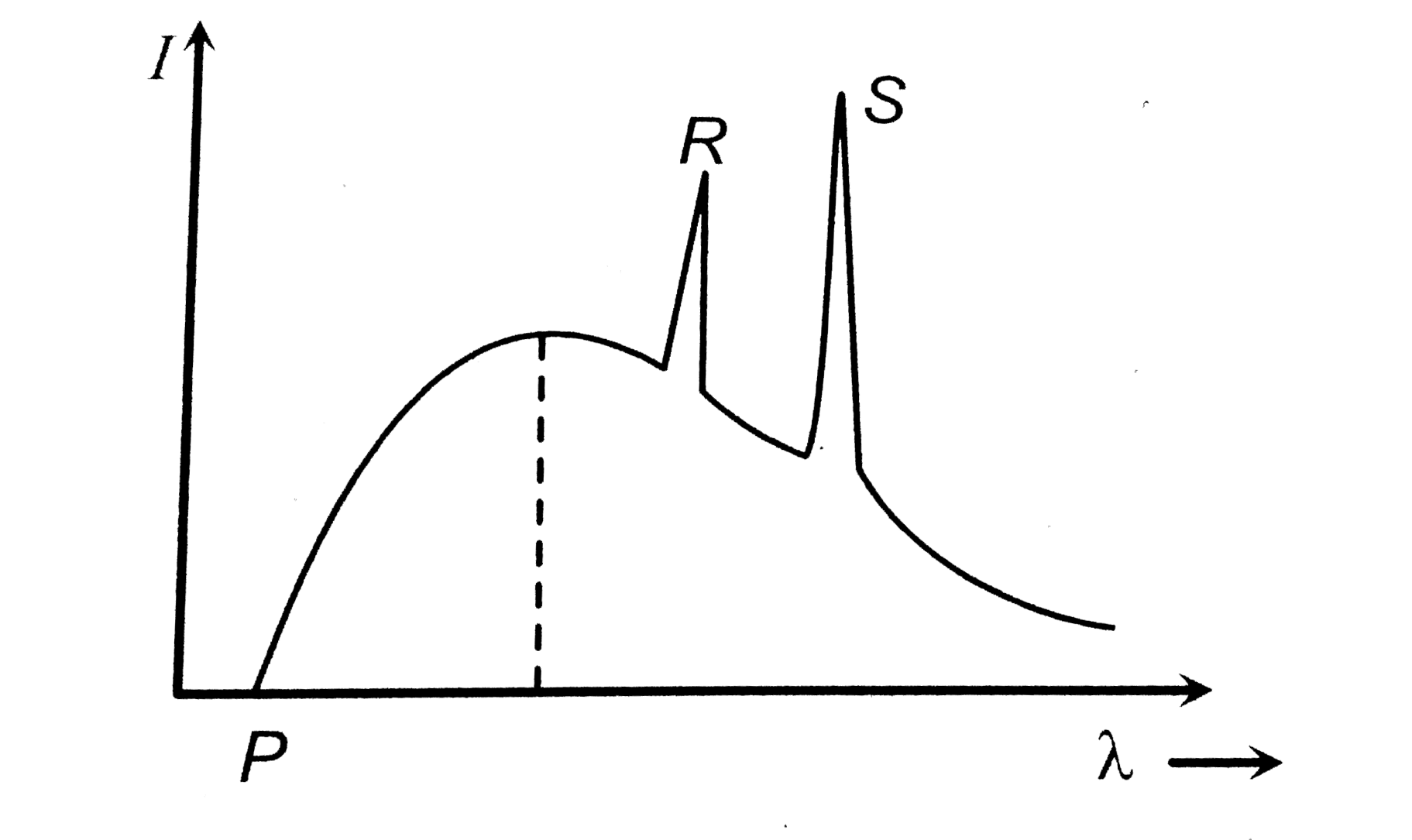If the potential difference applied to tube is doubled and the separation between the filament and the target is also doubled, the cutoff wavelength
will remain unchanged
will be doubled
will be halved
will become four times the original
The correct Answer is:C
To solve the problem regarding the effect of doubling the potential difference and the separation between the filament and the target on the cutoff wavelength, we can follow these steps:
1. Understand the relationship: The cutoff wavelength (λ_min) is given by the equation:
λmin=hceV
where:
- h is Planck's constant,
- c is the speed of light,
- e is the charge of an electron,
- V is the potential difference.
2. Identify the changes: According to the problem, the potential difference V is doubled (i.e., V becomes 2V), and the separation between the filament and the target is also doubled. However, the separation does not affect the cutoff wavelength.
3. Substitute the new potential difference: With the new potential difference, we can express the new cutoff wavelength:
λ′min=hce(2V)=hc2eV
4. Relate the new cutoff wavelength to the original: We can relate the new cutoff wavelength to the original cutoff wavelength:
λ′min=12λmin
This shows that the new cutoff wavelength is half of the original cutoff wavelength.
5. Conclusion: Since the cutoff wavelength is inversely proportional to the potential difference, doubling the potential difference results in halving the cutoff wavelength. Therefore, the correct answer is that the cutoff wavelength is halved.
Final Answer:
The cutoff wavelength will be halved (Option 3).
---
λmin=hceV
where:
- h is Planck's constant,
- c is the speed of light,
- e is the charge of an electron,
- V is the potential difference.
λ′min=hce(2V)=hc2eV
λ′min=12λmin
This shows that the new cutoff wavelength is half of the original cutoff wavelength.
The cutoff wavelength will be halved (Option 3).
Topper's Solved these Questions
- X-RaysBOOK - HC VERMA ENGLISHCHAPTER - X-RaysEXERCISE - Objective 2
8 Videos
- X-RaysBOOK - HC VERMA ENGLISHCHAPTER - X-RaysEXERCISE - Exercise
27 Videos
- X-RaysBOOK - HC VERMA ENGLISHCHAPTER - X-RaysEXERCISE - Ques for Short Ans
10 Videos
- THERMAL AND CHEMICAL EFFECT OF ELECTRIC CURRENTBOOK - HC VERMA ENGLISHCHAPTER - THERMAL AND CHEMICAL EFFECT OF ELECTRIC CURRENTEXERCISE - Short Question
9 Videos
Similar Questions
If the potential difference V applied to the coolidge tube is doubled, then the cut off wavelength
View SolutionIf the potential difference applied across a Coolidge tube is increased , then
View SolutionIf the potential difference applied across a Coolidge tube is increased , then
View SolutionIf the current in the circuit for heating the filament is increased, the cutoff wavelength
View SolutionThe potential difference applied to an X-ray tube is increased. As a result, in the emitted radiation,
View SolutionIf the potential difference across the ends of a conductor is doubled, the energy loss becomes-
View SolutionIf the potential difference across the ends of a conductor is doubled, the current flowing through it gets
View SolutionHow does the mobility of electrons in a conductor change, if the potential difference applied across the conductor is doubled, keeping the length and temperature of the conductor constant ?
View SolutionIf the potential difference between the anode and cathode of the X - ray tube is increases

View SolutionThe power of an X-ray tube is 16W. If the potential difference applied across the tube is 51kV , then the number of electrons striking the target per second is
View Solution
